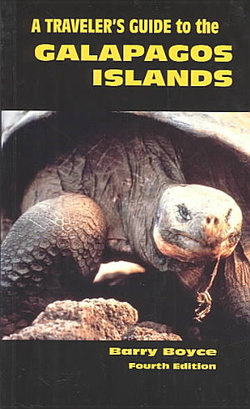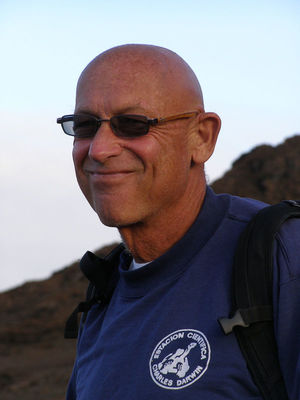PARDON OUR DUST - SOME SECTIONS ARE CURRENTLY BEING UPDATED. 4/10/ 2021
After studying brain research at the graduate level, I wandered - from the Peace Corps in Uganda, to the college textbook publishing industry, to the wine country of California (where I grew Chardonnay grapes), to the beautiful San Juan Islands of Washington State, where I boated through paradise. It's a much longer story than that. I tell friends that I always suffered from HCS - High Curiosity Syndrome.
In my brain research days, I studied “attention”. Not “attention deficit” or any of those trendy subjects – but how important attention was to learning. And we all “pay attention” a little differently , which should be fundamental to teaching. Another takeaway was that an animal did better in an “intelligence test” when it was in a secure environment. This was the old “rat-running” days of studying animal behavior. For example, a rabbit scored higher when tested in a tunnel rather than out in the open. Seems we as humans also learn better when we’re secure. Put your audience at ease, and make them feel comfortable. Another “should be” for teachers.
I had the great fortune to actually hone these teaching skills. In the 1980's I also had the great fortune to visit the Galápagos Islands for the first time. I was absolutely overwhelmed. Within a year, I wrote the travel guide called A Traveler’s Guide to the Galápagos Islands.Within another year, I had formed a travel company called GALAPAGOS TRAVEL and spent over 30 years leading natural history/ photography workshops to the Galápagos as well as other remote parts of the world. It was quite a ride. Now, I’m partly retired, devoting my time to astrophotography (from my home observatory in Arizona) and writing.
So, you see, my method was not developed in a university lecture hall; it is more of an "outreach'" skill acquired from over 30 years of natural history lectures at sea, from the Galápagos Islands to Antarctica. Now, I teach astronomy on an outreach basis for the University of Arizona, at their Mt. Lemmon Sky Center. The goal in both situations was and is to get people to feel more comfortable about what they already know and lower the wall of resistance to science that they’ve built through the years. Once the wall is lowered, people want more. And there is a lot more to give and share. There were certain parts of my lectures that resonated with the audience, that obviously raised their understanding and enthusiasm, and Astronomy & Natural History Connections: From Darwin to Einstein is an orderly presentation of the best of those moments. The reader is asked to bring their interest and curiosity; the book will provide the information and inspiration – both will be within easy reach.
More to follow - lots more. Some of it may take a while - it's a process! May, 2018
"NATURE IS MUCH MORE INVENTIVE THAN OUR IMAGINATIONS"
After studying brain research at the graduate level, I wandered - from the Peace Corps in Uganda, to the college textbook publishing industry, to the wine country of California (where I grew Chardonnay grapes), to the beautiful San Juan Islands of Washington State, where I boated through paradise. It's a much longer story than that. I tell friends that I always suffered from HCS - High Curiosity Syndrome.
In my brain research days, I studied “attention”. Not “attention deficit” or any of those trendy subjects – but how important attention was to learning. And we all “pay attention” a little differently , which should be fundamental to teaching. Another takeaway was that an animal did better in an “intelligence test” when it was in a secure environment. This was the old “rat-running” days of studying animal behavior. For example, a rabbit scored higher when tested in a tunnel rather than out in the open. Seems we as humans also learn better when we’re secure. Put your audience at ease, and make them feel comfortable. Another “should be” for teachers.
I had the great fortune to actually hone these teaching skills. In the 1980's I also had the great fortune to visit the Galápagos Islands for the first time. I was absolutely overwhelmed. Within a year, I wrote the travel guide called A Traveler’s Guide to the Galápagos Islands.Within another year, I had formed a travel company called GALAPAGOS TRAVEL and spent over 30 years leading natural history/ photography workshops to the Galápagos as well as other remote parts of the world. It was quite a ride. Now, I’m partly retired, devoting my time to astrophotography (from my home observatory in Arizona) and writing.
So, you see, my method was not developed in a university lecture hall; it is more of an "outreach'" skill acquired from over 30 years of natural history lectures at sea, from the Galápagos Islands to Antarctica. Now, I teach astronomy on an outreach basis for the University of Arizona, at their Mt. Lemmon Sky Center. The goal in both situations was and is to get people to feel more comfortable about what they already know and lower the wall of resistance to science that they’ve built through the years. Once the wall is lowered, people want more. And there is a lot more to give and share. There were certain parts of my lectures that resonated with the audience, that obviously raised their understanding and enthusiasm, and Astronomy & Natural History Connections: From Darwin to Einstein is an orderly presentation of the best of those moments. The reader is asked to bring their interest and curiosity; the book will provide the information and inspiration – both will be within easy reach.
More to follow - lots more. Some of it may take a while - it's a process! May, 2018
"NATURE IS MUCH MORE INVENTIVE THAN OUR IMAGINATIONS"

